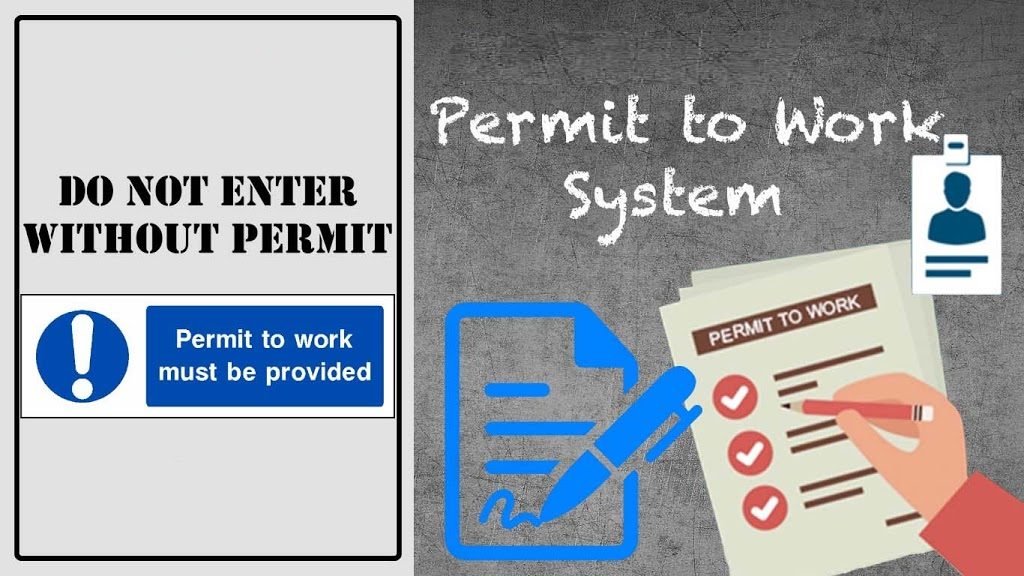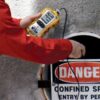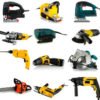
WORK PERMIT SYSTEM OF KNPC
Kuwait National Petroleum Company is a leading oil and gas company that operates in Kuwait. Like many other companies in the industry, KNPC relies on a well-organized work permit system to manage its daily operations. In this article, we will discuss KNPC’s work permit system in detail, including its importance, key features, and benefits.

Work permit system
The work permit system authorizes specific work to be carried. It serves as an official written record of conditions and requirements as agreed upon between the persons authorizing and receiving the permit. The system specifies the conditions and procedures for safe execution of the work and allows the work to be carried out under controlled conditions.
Importance of Work Permit System
A work permit system is an essential part of any organization’s health and safety management system. It is designed to ensure that all tasks are completed safely and effectively, minimizing the risk of accidents and injuries. The work permit system provides a structured approach to managing work activities by controlling access to equipment, materials, and work areas. The system also helps identify and control hazards associated with specific tasks, reducing the risk of accidents.
Benefits of Work Permit System
The work permit system provides several benefits to the company, its employees, and the environment. These benefits include:
- Improved Safety: The work permit system ensures that work activities are conducted safely, minimizing the risk of accidents and injuries.
- Compliance: The work permit system helps the company comply with local regulations and standards related to occupational health and safety.
- Efficiency: The work permit system helps streamline work activities, reducing downtime and increasing productivity.
- Environmental Protection: The work permit system includes measures to protect the environment by minimizing the risk of spills and other environmental incidents.
Work Not Requiring a Permit
- Routine work in established workshops and adjacent yards with boundaries.
- Routine material handling work in warehouses and lay down areas.
- Routine office work.
- Visual inspection or checking without using any tools in operation areas with verbal permission from assistant custodians.
- Work carried out by operation employees as part of their daily start-up and shutdown of the plant.
- Work carried out in designated areas declared as work permit-free by the client.
- Any work approved by the client on special request by the contractor.
Understanding the Signatories in the Work Permit System
In the Work Permit System, the roles of the signatories are crucial. They not only validate the permit but also ensure that all safety protocols are adhered to. Let’s explore these roles in detail.
Work Permit Issuer
The issuer, often referred to as the “Issuing Authority,” is responsible for granting the work permit. They ensure that all safety measures are in place and that the work can be carried out without any hazards.
Roles and Responsibilities of the Issuer
- Ensuring that the work is necessary and that all safety precautions are in place.
- Verifying that the executor and the team are trained and competent to carry out the work.
- Ensuring that the work does not pose any risks to the surrounding environment or other ongoing operations.
- Validating that all necessary equipment and tools are available and in good working condition.
Work Permit Executor
The executor is the individual or the team responsible for carrying out the work. They must adhere to all the conditions and guidelines mentioned in the work permit.
Roles and Responsibilities of the Executor
- Comprehending all the conditions and guidelines mentioned in the work permit.
- Ensuring that the team is aware of the safety protocols and adheres to them.
- Reporting any unforeseen hazards or changes in the work environment to the issuer.
- Ensuring that the work is carried out efficiently without compromising safety.
Work Permit Holder
The permit holder is the individual or entity responsible for overseeing the work. They ensure that the work is carried out as per the guidelines and within the stipulated time.
Roles and Responsibilities of the Permit Holder
- Overseeing the work to ensure that it aligns with the conditions mentioned in the permit.
- Ensuring that the work is completed within the stipulated time.
- Reporting any deviations or issues to the issuer.
- Ensuring that the work area is safe after the completion of the task.
Training Requirements for Signatories
Ensuring safety in a high-risk environment like a petroleum refinery requires rigorous training. The signatories in the Work Permit System undergo specialized training to ensure they are competent in their roles.
Certification and Renewal
After the training, the signatories are tested and certified. This certification is valid for a specific period, after which it needs renewal. Continuous training ensures that the signatories are updated with the latest safety protocols and guidelines.
Work Permit Categories and Types in KNPC
Work permits are essential documents that categorize tasks based on their nature and potential hazards. Proper work permits and risk assessments are crucial for ensuring the safety of workers while performing potentially hazardous tasks. This article explores the most common types of work permits in KNPC and outlines the procedures and safety measures associated with each permit.
here are various types of work permits, each tailored to specific tasks and their associated risks:
- Cold Work Permit (Green Colour Permit): This permit is required for tasks that do not involve or generate a source of ignition. It ensures that the work does not pose a risk of igniting flammable substances.
- Hot Work Permit (Red Colour Permit): This permit is essential for tasks that involve or generate a source of ignition, such as welding or grinding. It ensures that necessary precautions are taken to prevent fires or explosions.
- Confined Space Entry Authorization (Yellow Colour Authorization): This authorization is associated with work permits that involve personnel entry into confined spaces. It ensures that the risks associated with confined space entry, such as lack of oxygen or exposure to toxic gases, are adequately addressed.
- Excavation Authorization: This is required for excavation work, ensuring that the risks associated with digging, such as underground utilities or unstable soil, are addressed.
- Other Authorizations: Depending on the nature of the work, other authorizations might be required, such as Vehicle Safety Certificate, Electrical Isolation Tag, and Inspection Approval.
General Requirements for Work Permits
Permit Execution Procedures
Workers must follow the conditions outlined in the work permit during the execution of tasks.
Communication and Handover
Effective communication between permit issuers, executors, and involved parties is essential for safety.
Permit Validity and Extensions
Work permits have specific validity periods, and extensions must be approved before expiration.
Permit Renewal
Certain work permits may require periodic renewal to maintain safety standards.
Permit Closure and Documentation
After completing the work, the permit must be closed, and documentation should be maintained for reference.
Scope of the Document
Attachments of Work Permit
The work permit may require several attachments, including:
- Work method statement
- Work permit risk assessment
- Issuer, Executor, and permit holder PTW card copies
- Safety certificate of equipment
- Lifting plan if lifting activity is involved
- Drawing of location
- Entrant & Attendant copy if it’s a confined space permit, etc.
Every document related to safety in the petroleum industry has a specific scope, ensuring that all potential hazards and risks are addressed.
Addressing Safe Work Practices
This document serves as a comprehensive guide to safe work practices in petroleum refineries. It emphasizes the importance of following the Work Permit System & Risk Assessment to protect employees and contractors from potential hazards.
Conditions and Procedures for Safe Work Execution
The document outlines the specific conditions and procedures that need to be followed to ensure the safe execution of work. These guidelines serve as a roadmap, ensuring that every task is carried out under controlled risk conditions.
Ensuring Work is Carried Out Under Controlled Risk Conditions
Safety is not just about preventing accidents but also about controlling the risks associated with each task. The document emphasizes the importance of ensuring that every job is executed under conditions where risks are controlled and minimized.
Management Responsibilities
The onus of implementing and ensuring compliance with the Work Permit System & Risk Assessment lies with the management. They play a pivotal role in ensuring that the guidelines are not just followed but ingrained in the daily operations of the refinery.
Implementation of Safe Work Practices
The management is responsible for ensuring that the guidelines and protocols outlined in the document are implemented at all levels. This includes ensuring that every employee and contractor is aware of the Work Permit System and the importance of Risk Assessment.
Ensuring Compliance with Work Permit System & Risk Assessment
Compliance is not just about following guidelines but ensuring that they are implemented effectively. The management must ensure that every task, no matter how minor, is carried out following the Work Permit System & Risk Assessment.
Conclusion
In conclusion, work permits are integral to maintaining a safe working environment and preventing accidents and injuries. By following outlined procedures and adhering to safety measures, organizations can prioritize the well-being of their workforce. Regular training, continuous monitoring, and open communication play vital roles in creating a culture of safety and responsibility in the workplace. Let us continue to prioritize safety, making the workplace a secure and productive space for all.
FAQs – Work Permits and Risk Assessments
Q: What is a work permit?
A: A work permit is a formal document that authorizes specific work activities and ensures that all necessary safety measures are in place before work commences.
Q: Who issues work permits?
A: Work permits are typically issued by qualified individuals, known as permit issuers, who have the expertise to assess potential risks and authorize work.
Q: Why is a risk assessment essential before issuing a work permit?
A: A risk assessment helps identify potential hazards and assess their severity, allowing for the implementation of appropriate control measures to mitigate risks.
Q: What are the different types of work permits?
A: Work permits can be categorized into hot work permits, cold work permits, confined space entry permits, vessel entry permits, and excavation authorization permits, among others.
Q: How long is a work permit valid?
A: Work permits have specific validity periods, and extensions may be granted based on the nature and duration of the work.
Q: What safety measures are required for hot work permits?
A: Hot work permits involve precautions like proper ventilation, gas testing, fire-resistant barriers, and the availability of firefighting equipment.
Q: When is a cold work permit required?
A: Cold work permits are necessary for tasks that don’t involve hot surfaces but still carry certain risks. Non-sparking tools and safety gear are often used during cold work.
Q: What is a confined space entry permit?
A: A confined space entry permit is required when workers enter spaces that have limited entry and exit points and are not designed for continuous occupancy.
Q: What precautions are taken for vessel entry permits?
A: Vessel entry permits require proper testing and inspection of the vessel, as well as safety measures like proper ventilation and emergency equipment.
Q: What is the purpose of a risk matrix in risk assessment?
A: A risk matrix helps classify risks based on their likelihood and severity, aiding in the prioritization of control measures.
Q: What are administrative controls in risk assessment?
A: Administrative controls involve implementing policies, procedures, and training to manage risks without physically modifying the work environment.
Q: How are gas testing and gas detectors used in risk assessment?
A: Gas testing involves analyzing the atmosphere for the presence of flammable or toxic gases. Gas detectors are used by authorized gas testers to determine gas levels.
Q: What is the role of an authorized gas tester?
A: An authorized gas tester is responsible for testing the atmosphere in work areas, ensuring it is safe for workers and compliant with safety standards.
Q: How do risk assessments contribute to a safe working environment?
A: Risk assessments identify potential hazards and implement measures to control risks, promoting a safer work environment and preventing accidents.
Q: Can hot work permits be issued for underwater tasks?
A: Yes, hot work permits may be required for underwater tasks involving potential ignition sources.
Q: What are the safety precautions during oil pier work?
A: Safety precautions during oil pier work include wearing life jackets, using lifelines, and restricting access to specific areas.
Q: Why are radiography equipment safety measures crucial?
A: Radiography equipment uses ionizing radiation, making it essential to shield the equipment and ensure proper handling for worker safety.
Q: Are workers required to wear personal protective equipment (PPE) during hot work?
A: Yes, workers must wear appropriate PPE during hot work to protect themselves from potential hazards.
Q: Why is it important to communicate with the Fire Station during critical works?
A: Communication with the Fire Station ensures that they are aware of ongoing critical works and can provide immediate assistance if needed.
Q: What are the criteria for identifying confined spaces?
A: Confined spaces are areas that are large enough for a person to enter, have limited entry and exit points, and are not designed for continuous occupancy.



Respected sir can we provided with pdf notes ?